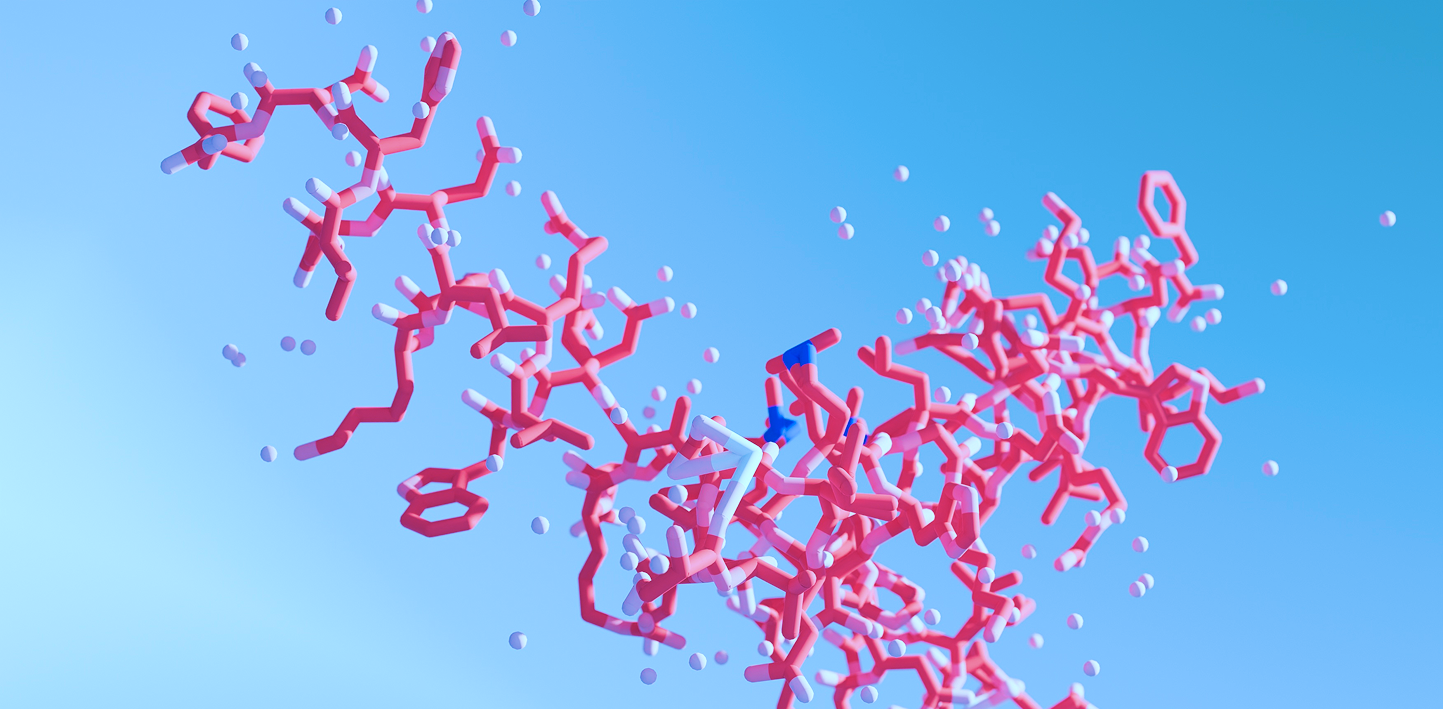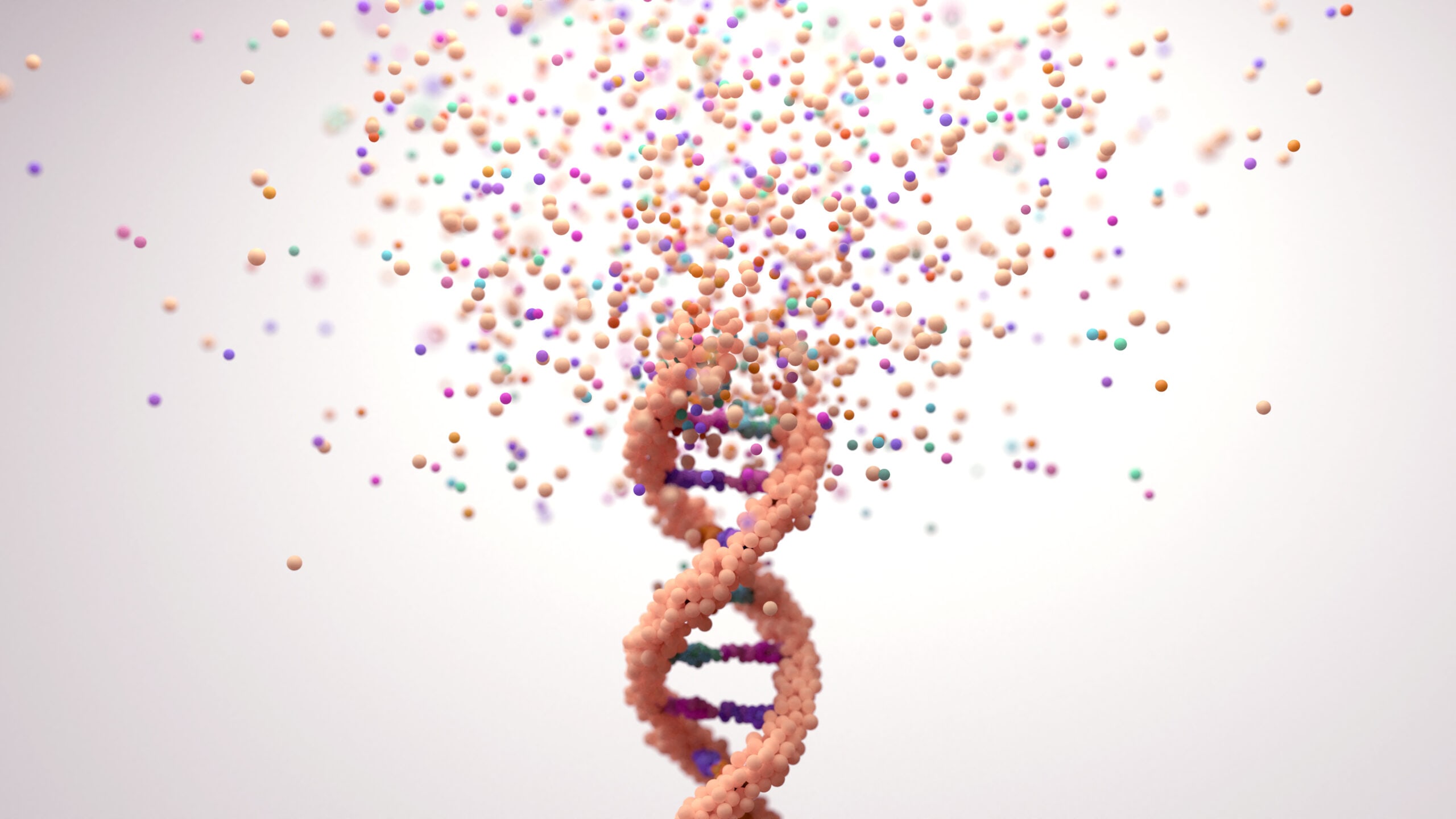5 Minute Read
Transforming Medicinal Chemistry
How Generative AI Enhances Hit Identification, Hit-to-Lead, and Lead Optimization Workflows

The pharmaceutical industry stands at a pivotal moment where artificial intelligence is revolutionizing drug discovery. As medicinal chemists face the challenge of exploring vast chemical spaces while balancing time, cost, and success rates, generative AI emerges as a powerful ally that enhances rather than replaces human expertise. This transformation is particularly evident in three critical stages of drug discovery: hit identification, hit-to-lead optimization, and lead optimization.
The Promise and Reality of Generative AI in Drug Discovery
Generative AI represents a paradigm shift in how we approach molecular design. At its core, it's an algorithm that creates new content—in this case, novel molecules—based on patterns recognized in training data. For medicinal chemists, this translates into a powerful tool capable of generating new molecules based on desired properties, exploring larger chemical spaces that would be humanly impossible to navigate, and uncovering insights from complex datasets.
The numbers speak volumes about the untapped potential: while current technologies have allowed us to explore only 10⁴ to 10⁹ compounds in chemical space, there remains a vast unexplored territory that could hold the key to drugging previously "undruggable" targets. This is where generative AI's computational power becomes invaluable, enabling rapid exploration of chemical space that would take human chemists' decades to investigate.
However, the reality is more nuanced than the hype suggests. Generative AI is not here to replace medicinal chemists but to empower them. This technology faces significant challenges, particularly in ensuring that generated molecules are both synthetically accessible and possess the right properties for drug development. Without proper guidance and context, AI can generate molecules that are essentially "garbage"—chemically valid but biologically irrelevant.
The Critical Role of High-Quality Training Data
The foundation of any successful generative AI application in drug discovery lies in the quality of its training data. This principle cannot be overstated: models are only as good as the data they learn from. The pharmaceutical industry has learned this lesson through experience, as early AI models often generated compounds that failed when tested experimentally, leading to wasted time and resources in the critical design-make-test-analyze cycle.
The solution lies in using robust, experimental data that has been carefully curated and validated. This means data points that have been assayed consistently, using the same experimental protocols, and representing diverse chemical space. The challenge is that much of the published literature contains positive results, with negative data rarely shared—creating a significant gap in model training.
Companies that have successfully implemented generative AI have invested heavily in cleaning and curating their internal datasets, often spanning decades of experimental work. This includes not just activity data, but comprehensive ADMET (Absorption, Distribution, Metabolism, Excretion, and Toxicity) profiles that are essential for predicting drug-like properties.
Enhancing Hit Identification Workflows
Hit identification represents the earliest stage of drug discovery, where the goal is to find initial compounds that show activity against a target of interest. Traditionally, this involves screening large compound libraries, but generative AI is transforming this process in several ways.
Expanding Chemical Space Exploration: Generative AI enables medicinal chemists to explore both known and unknown chemical space more efficiently. While known chemical space can be searched using traditional methods, unknown chemical space—where truly novel compounds reside—requires the pattern recognition capabilities of AI. By training models on diverse chemical datasets, researchers can generate novel scaffolds and chemotypes that might not be present in existing compound libraries.
Virtual Screening at Scale: Modern generative AI platforms can screen billions of virtual compounds in minutes, a process that would be impossible through traditional high-throughput screening alone. This capability allows researchers to cast a wider net in their initial hit identification efforts, potentially uncovering novel starting points for drug development.
Property-Guided Generation: Unlike random compound generation, modern AI systems can be guided by desired properties from the outset. This means that hit identification can simultaneously consider factors like synthetic accessibility, drug-likeness, and basic ADMET properties, reducing the likelihood of pursuing compounds that will ultimately fail in later stages.
Transforming Hit-to-Lead Optimization
The hit-to-lead phase is characterized by limited data availability and a focus on exploration rather than exploitation. This stage typically starts with one or a few confirmed hits and aims to expand the chemical series while improving potency and drug-like properties.
Scaffold Hopping and Analog Design: Generative AI excels at scaffold hopping—the process of finding structurally different compounds that maintain or improve biological activity. AI models can identify bioisosteric replacements and suggest novel scaffolds that human chemists might not immediately consider. This capability is particularly valuable when dealing with intellectual property constraints or when seeking to improve specific properties.
Fragment-Based Drug Design: AI can assist in fragment linking, growing, and merging strategies by predicting how different molecular fragments might combine to create more potent compounds. The technology can rapidly enumerate possible combinations and predict their properties, helping chemists prioritize which synthetic targets to pursue.
Multi-Parameter Optimization: One of the most challenging aspects of hit-to-lead optimization is balancing multiple competing objectives—improving potency while maintaining selectivity, optimizing ADMET properties, and ensuring synthetic feasibility. Generative AI can help navigate this complex optimization landscape by generating compounds that simultaneously address multiple criteria.
Advancing Lead Optimization Strategies
Lead optimization represents the most focused phase of medicinal chemistry, where teams have identified promising chemical series and are working to optimize them for clinical development. This stage is characterized by extensive experimental data and requires sophisticated modeling approaches.
Structure-Activity Relationship (SAR) Analysis: AI can accelerate SAR analysis by identifying patterns in large datasets that might not be immediately apparent to human chemists. This includes recognizing activity cliffs, identifying key pharmacophores, and predicting the impact of specific structural modifications.
Predictive ADMET Modeling: Advanced machine learning models trained on proprietary pharmaceutical data can provide more accurate predictions of ADMET properties than traditional approaches. These models can guide optimization efforts by predicting which modifications are likely to improve specific properties like permeability, metabolic stability, or safety profiles.
Free Energy Perturbation Integration: Leading-edge platforms integrate generative AI with more rigorous computational methods like free energy perturbation (FEP) calculations. This combination allows for both rapid idea generation and detailed thermodynamic analysis of protein-ligand interactions.
The Importance of Confidence Scoring and Model Validation
One of the most critical advances in AI-driven drug discovery is the development of confidence scoring systems. These systems provide medicinal chemists with an assessment of how reliable each prediction is, allowing them to make informed decisions about which compounds to prioritize for synthesis and testing.
Confidence scores are generated by analyzing the correlation between model predictions and experimental results across multiple validation sets. As more experimental data becomes available, these confidence scores are continuously updated, creating a feedback loop that improves model reliability over time.
This approach addresses one of the key concerns medicinal chemists have about AI predictions: knowing when to trust the model and when to rely on human intuition and experience. High confidence predictions can guide synthetic priorities, while low confidence predictions signal areas where additional experimental validation is needed.
Integration with Retrosynthesis Planning
A critical aspect often overlooked in AI-driven drug design is synthetic accessibility. The most promising compound is worthless if it cannot be synthesized efficiently. Modern AI platforms address this by integrating generative design with retrosynthesis planning tools.
This integration serves two purposes: first, it provides synthetic accessibility scores during the design phase, helping to filter out compounds that would be difficult or impossible to make. Second, it provides detailed retrosynthetic routes for prioritized compounds, enabling rapid transition from virtual design to bench synthesis.
The combination of generative AI with retrosynthesis planning represents a significant advancement in making AI-designed compounds practically accessible to medicinal chemists.
Democratizing Access to AI-Powered Drug Discovery
One of the most significant developments in AI-driven drug discovery is the democratization of access to sophisticated AI tools. Historically, only large pharmaceutical companies with extensive internal datasets and computational resources could develop and deploy advanced AI models. Today, commercial platforms are making these capabilities available to smaller biotechnology companies and academic researchers.
These platforms provide access to models trained on decades of pharmaceutical data, allowing smaller organizations to benefit from the same AI capabilities as large pharma. Additionally, many platforms offer the ability to incorporate proprietary data, enabling customization for specific therapeutic areas or compound classes.
Challenges and Limitations
Despite the significant promise of generative AI in medicinal chemistry, several challenges remain:
Data Quality and Bias: AI models can perpetuate biases present in training data. If training sets are dominated by certain chemical classes or therapeutic areas, the models may be less effective for novel targets or underexplored chemical space.
Interpretability: While AI can generate novel compounds, understanding why certain molecules are predicted to have specific properties remains challenging. This "black box" nature can make it difficult for medicinal chemists to build intuition and learn from AI predictions.
Experimental Validation: Ultimately, all AI predictions must be validated experimentally. The cost and time required for synthesis and testing remain significant bottlenecks in the drug discovery process.
Integration with Existing Workflows: Successfully implementing AI tools requires integration with existing medicinal chemistry workflows, data management systems, and decision-making processes.
The Future of AI-Enhanced Medicinal Chemistry
The future of generative AI in medicinal chemistry lies not in replacing human expertise but in creating powerful human-AI partnerships. The most successful implementations combine the pattern recognition and computational power of AI with the creativity, intuition, and scientific judgment of experienced medicinal chemists.
Emerging trends include the expansion of AI capabilities beyond small molecules to biologics, PROTACs, and other novel modalities. Additionally, the integration of AI with automated synthesis and testing platforms promises to create closed-loop systems that can rapidly iterate through design-make-test cycles with minimal human intervention.
As the technology continues to mature, we can expect to see more sophisticated models that better understand the nuances of drug discovery, improved integration with experimental workflows, and enhanced interpretability that helps chemists learn from AI predictions.
Conclusion
Generative AI is transforming medicinal chemistry by enhancing hit identification, hit-to-lead optimization, and lead optimization workflows. The technology's ability to explore vast chemical spaces, predict molecular properties, and suggest novel synthetic targets is already accelerating drug discovery timelines and improving success rates.
However, the key to successful implementation lies in understanding both the capabilities and limitations of AI. High-quality training data, robust validation methods, and confidence scoring systems are essential for building trust and ensuring reliable predictions. Most importantly, AI should be viewed as a powerful tool that augments human expertise rather than replacing it.
As the field continues to evolve, the most successful drug discovery organizations will be those that effectively integrate AI capabilities with human creativity and scientific judgment, creating synergistic partnerships that push the boundaries of what's possible in medicinal chemistry. The future of drug discovery is not about choosing between human intelligence and artificial intelligence—it's about combining both to tackle the most challenging problems in human health.


